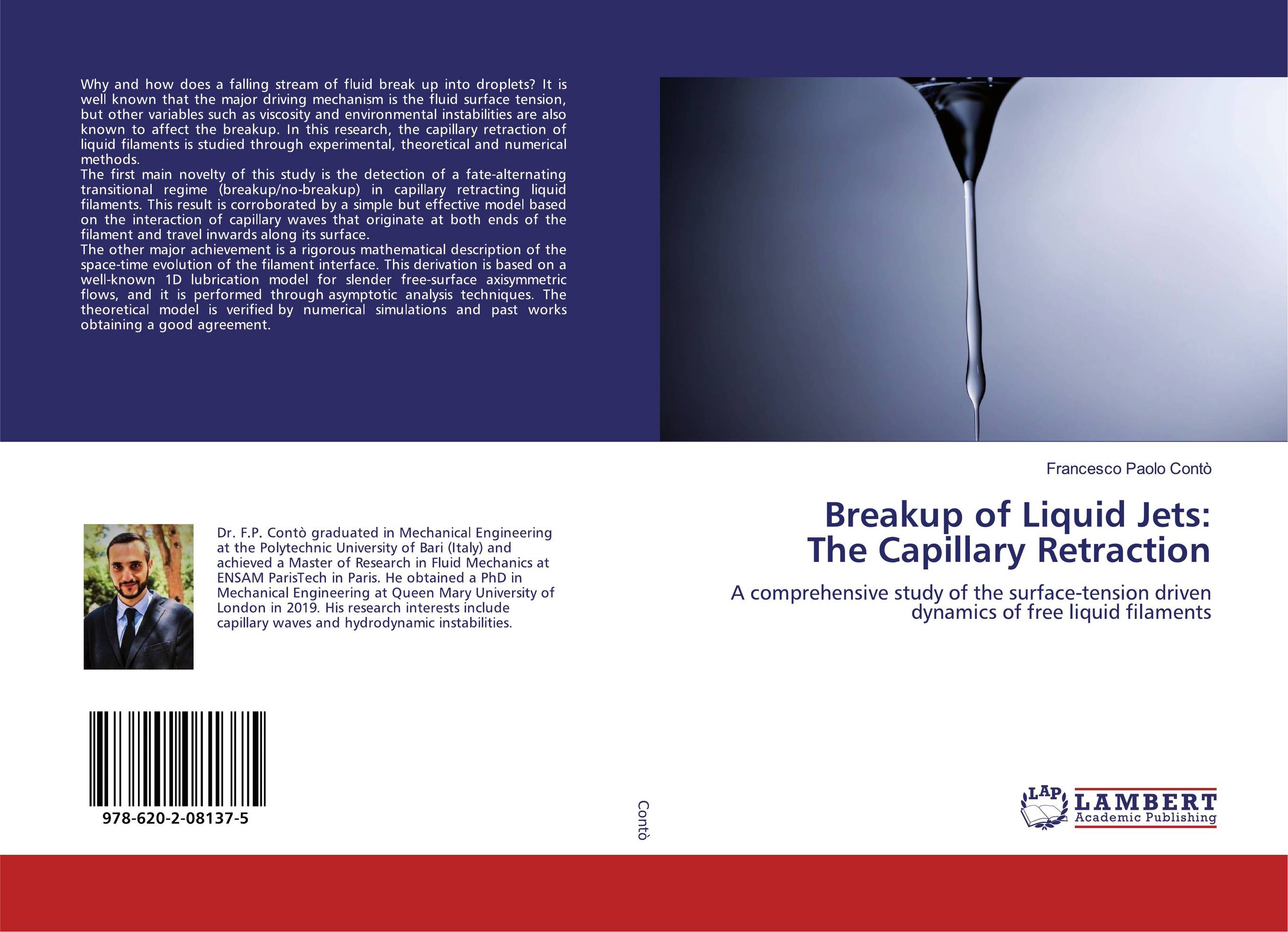| Поиск по каталогу |
|
(строгое соответствие)
|
- Профессиональная
- Научно-популярная
- Художественная
- Публицистика
- Детская
- Искусство
- Хобби, семья, дом
- Спорт
- Путеводители
- Блокноты, тетради, открытки
Breakup of Liquid Jets:The Capillary Retraction. A comprehensive study of the surface-tension driven dynamics of free liquid filaments

В наличии
| Местонахождение: Алматы | Состояние экземпляра: новый |

Бумажная
версия
версия
Автор: Francesco Paolo Cont?
ISBN: 9786202081375
Год издания: 2019
Формат книги: 60×90/16 (145×215 мм)
Количество страниц: 128
Издательство: LAP LAMBERT Academic Publishing
Цена: 35323 тг
Положить в корзину
| Способы доставки в город Алматы * комплектация (срок до отгрузки) не более 2 рабочих дней |
| Самовывоз из города Алматы (пункты самовывоза партнёра CDEK) |
| Курьерская доставка CDEK из города Москва |
| Доставка Почтой России из города Москва |
Аннотация: Why and how does a falling stream of fluid break up into droplets? It is well known that the major driving mechanism is the fluid surface tension, but other variables such as viscosity and environmental instabilities are also known to affect the breakup. In this research, the capillary retraction of liquid filaments is studied through experimental, theoretical and numerical methods.The first main novelty of this study is the detection of a fate-alternating transitional regime (breakup/no-breakup) in capillary retracting liquid filaments. This result is corroborated by a simple but effective model based on the interaction of capillary waves that originate at both ends of the filament and travel inwards along its surface.The other major achievement is a rigorous mathematical description of the space-time evolution of the filament interface. This derivation is based on a well-known 1D lubrication model for slender free-surface axisymmetric flows, and it is performed through asymptotic analysis techniques. The theoretical model is verified by numerical simulations and past works obtaining a good agreement.
Ключевые слова: Hydrodynamics, Drops, capillary waves, breakup, Self-similarity



